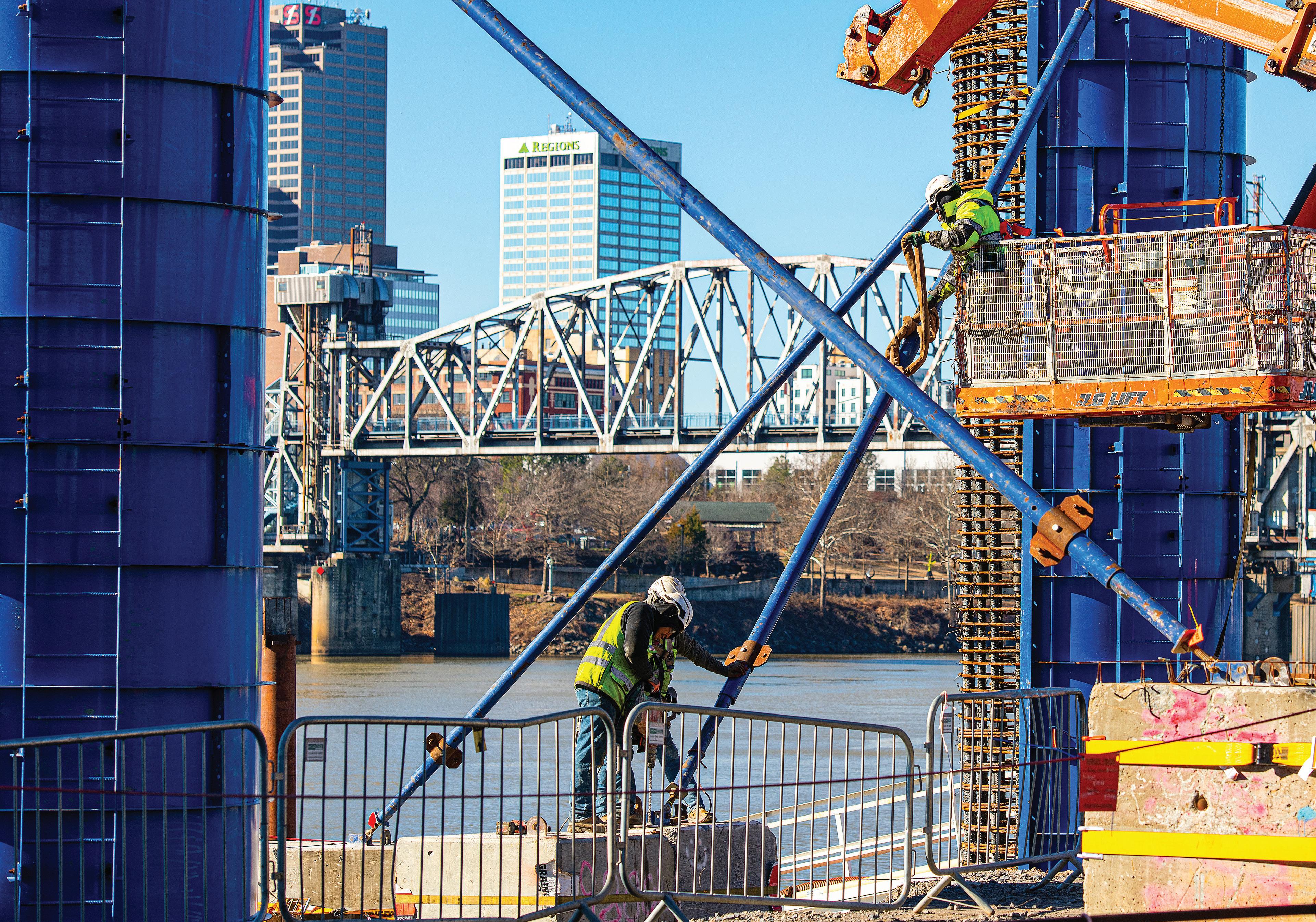
4 minute read
DEDICATED TO Workplace Safety
BY DAVID NILLES
THE ARKANSAS DEPARTMENT OF TRANSPORTATION TAKES PRIDE IN MAKING SAFETY A TOP PRIORITY. Not just the safety of motorists traveling the state’s highways, but also the safety of the Department’s employees as they perform their job duties day in and day out. The ultimate goal is to make sure that every employee finishes the day and goes home safely. That is job number one.
The American Society of Safety Professionals (ASSP) says sound safety practices are both socially responsible and good business. Research and industry experience suggest organizations that invest in occupational safety experience a return on investment. Among the returns ASSP shares are:
• A positive public image.
• Compliance with regulations, laws and standards can prevent poor public perception and costly disasters.
• Cost savings – Occupational safety programs can reduce worker injuries and incidents.
• Increased operational efficiency – A focus on safety leads to higher worker productivity.
• Improved employee satisfaction – recruiting and training top talent is easier for organizations that provide a safe and comfortable workplace.
Eddie Tanner, Section Head of Workforce Development, Health & Safety for ArDOT, provided an insight into ArDOT’s Safety Program.
“Our safety program applies to all employees throughout the Department. When it comes to the Department’s core values, workplace safety is in the top tier. You need your employees to stay safe and able to perform their duties. Thus, you must ensure that the work environment you put them in is one that is safe enough for them to do their
(continued on page 6) ongoing challenge is to keep risk mitigated and keep workplace safety standards high – and constantly improving. That’s why the goal in workplace safety is to be improving safety standards constantly, as a work in progress, doing everything within your powers and within reasonable expectations to keep your employees safe."
Spreading The Word
So how is ArDOT’s program delivered to employees across the state?
“We have recently installed video monitors in Districts and Divisions with messages about Health and Safety in the workplace. Our maintenance and field employees are required to participate in regularly scheduled meetings. We have recently added new Health and Safety Officers and each District has a dedicated Safety Officer that will be able to work closer with our employees and deliver safety meetings and training as needed,” Tanner shared.
A CLOSER LOOK AT ArDOT’S SAFETY PROGRAM
There are several components to the Department’s program. It takes all of the components working well to maintain a successful program.
continuously improving workplace safety and health, and sets program expectations and responsibilities. Managers at all levels make safety and health a core organization value.
Worker participation: Employees are encouraged to participate in the program and feel comfortable providing input and reporting safety or health concerns.
Hazard Identification and Assessment: To identify and assess hazards, employers and workers collect and review information about the hazards present or likely to be present in the workplace. They conduct initial and periodic inspections of the workplace to identify new or recurring hazards and investigate injuries, illnesses, incidents and close calls/near misses to identify the underlying hazards, their causes, and safety and health program shortcomings.
Education and Training: All employees are trained to understand how the program works and how to carry out the responsibilities assigned to them under the program. Employers, managers and supervisors receive training on safety concepts and their responsibility for protecting workers’ rights and responding to workers’ reports and concerns. All employees are trained to recognize workplace hazards and to understand the control measures that have been implemented.
Once a safety and health program is established, it should be evaluated initially to verify that it is being implemented as intended. Whenever a problem is identified in any part of the safety and health program, employers—in coordination with supervisors, managers and workers—need to take prompt action to correct the problem and prevent its recurrence.
Tanner has been pleased with the success of ArDOT’s program.

“Our Safety Program has become stronger with the addition of our new Health and Safety officers and an importance placed on work zone safety. Change in the workplace often comes from the top. For employees to take health and safety seriously, they need to see the managerial commitment to health and safety practices in the workplace. Our ArDOT administration has been very supportive with our recent safety initiatives as well as upgrading our safety personal protective equipment.”
In Case Of An Accident
Like any workplace, accidents may happen. Employees must report any type of equipment/motor vehicle or injury accident to their supervisor and the proper accident report shall be completed and forwarded to our office within 10 days. If it is a serious accident, then it shall be reported to the Health and
Safety officer and safety section immediately. Each District has an Accident Review Committee (made up of District administration and a Safety Officer) that meets at least twice a year or as needed to review any Preventable/Lost Time accidents and what measures can be put in place to avoid reoccurrence.
Moving Forward With More Support
In the coming months, ArDOT will be introducing District Safety Teams that will be a resource for employees to report and express any safety concerns to District management.

The Department will also introduce a Statewide Safety Team comprised of representatives from each District along with Division representatives to address safety related issues throughout the state.
“Overall, I think the Department works in a safe manner,” Tanner stated. “When it comes to safety and health practices, there’s always room for improvement. Your program should constantly monitor workplace hazards and evaluate existing procedures for efficiency. Don’t aim for “best practices” when you consider health and safety. Instead, aim for “better practices.” No matter how efficient your current policies seem, always assume there is room for improvement.”









